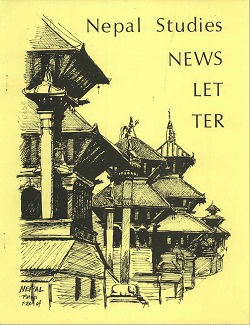Author Biography
Suchismita Das is a PhD student at the Department of Anthropology, University of Chicago. She studied at Delhi University (M.A, M.Phil), before coming to Chicago. Her research interests include political anthropology, anthropology of conservation and development, anthropology of tourism, indigeneity and identity politics, and the politics of place-making. Her PhD project entails an ethnography of ecotourism in the Himalayan state of Sikkim, studying how these factors come into play as Sikkim emerges as a premier tourism destination. She has previously worked at an Indian environmental research organization, documenting the politics of conservation in a wildlife sanctuary in Karnataka.
Abstract
In the year 1971, the renowned India film-maker Satyajit Ray made a documentary on Sikkim, commissioned by the royal family, to showcase the small Himalayan Kingdom which was then a protectorate of India. The content of the film however failed to impress its royal patrons and hence it was not publicly released. A few years later the kingdom was merged into India as the twenty-second state of the union and the film was banned by the Indian government for its sensitive topic. After more than thirty years of unavailability and hence a resultant unique legendary status, the film finally became available for unrestricted public viewing from 2011. This paper traces the eventful trajectory of this film, treating its journey as metaphoric of the political history of Sikkim as it negotiated its status within the larger nation-state during various configurations of political power-structures. Reading back from the controversies engendered in each phase, the article sheds light on the underlying ideological contestations over the material and symbolic dimensions of Sikkim’s political identity which came to bear on the course of events. The unbounded, unpredictable life and after-life of the film attests to the unbounded, unpredictable ways in which hegemonic assertions operate – such that the meaning and significance of the film and by extension the meaning and significance of the historic moment in which it was made and the present vantage-point remain ever-dynamic, open to emergent re-articulations and re-significations.
Acknowledgements
I would like to thank Dr Mark Turin for all the encouragement and for the wonderfully insightful course on the visual representation of the Himalayas, from which the idea of this article germinated. I am grateful to the two anonymous reviewers and to Hope Cooke for their comments, which have helped me improve my arguments. Lastly, I am indebted to Dr. Anna Balikci Denjongpa for being my one-stop resource on all things Sikkim.
Creative Commons License

This work is licensed under a Creative Commons Attribution 4.0 License.
Recommended Citation
Das, Suchismita. 2014. Sikkim the Place and Sikkim the Documentary: Reading Political History through the Life and After-Life of a Visual Representation. HIMALAYA 33(1).
Available at:
https://digitalcommons.macalester.edu/himalaya/vol33/iss1/9


